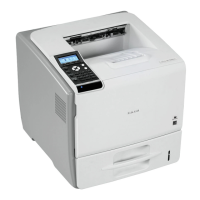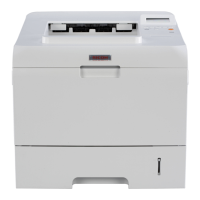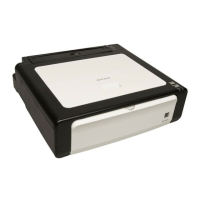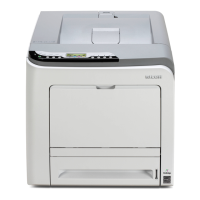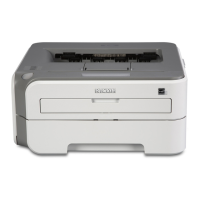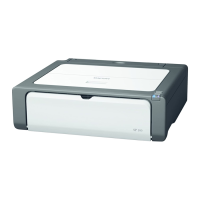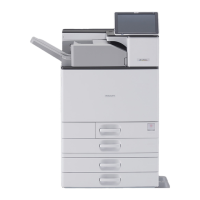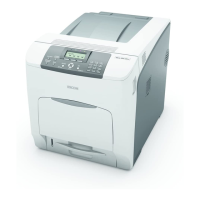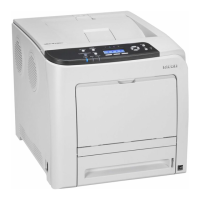5. Securing Information Stored on the
Hard Disk
This chapter describes how to prevent unauthorized viewing, access, or modification of information stored
on the hard disk by using the security options of the printer.
Protecting the Address Book
If user authentication is specified, the user who has logged in will be designated as the sender to prevent
data from being sent by an unauthorized person masquerading as the user.
To protect the data from unauthorized reading, you can also encrypt the data in the Address Book.
Address Book Access Permission
This can be specified by the registered user. Access permission can also be specified by a user granted
full control or the user administrator.
You can specify who is allowed to access the data in the Address Book.
By making this setting, you can prevent the data in the Address Book being used by unregistered users.
For details about logging in and out with administrator authentication, see p.22 "Using Web Image
Monitor to Configure Administrator Authentication".
1. Log in to Web Image Monitor as an administrator.
2. Click [Address Book] in the Menu area.
3. Click the user you want to specify in the address list, and then click [Change].
You can search using [Name], [Registration No.], or [User Code].
4. Click [Change] under "Access Privilege" in the "Protect Destination" section of the
"Protection" area.
5. Specify the access permission, and then click [OK].
6. Click [OK].
7. Click [Back].
8. Click [Logout].
9. Close Web Image Monitor.
• "Access Privilege" appears only when Basic Authentication, Windows Authentication, LDAP
Authentication, or Integration Server Authentication is enabled.
61
